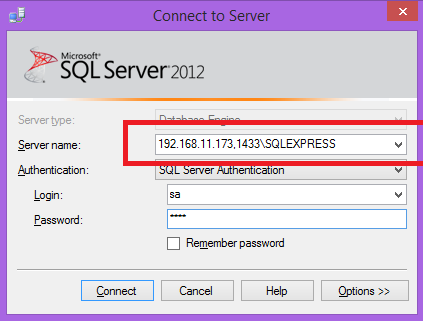Microsoft SQL
The Zephyr database will be referenced during the installation. It must be installed separately and before the installation. These instructions will help you connect your Zephyr installation to a Microsoft SQL Server Database.
Supported Databases
Microsoft SQL Server
Versions: 2017 and 2019
Install the JDBC Driver. See, Zephyr Supported Platforms
Prerequisites
Check whether your version of Microsoft SQL Server is supported.
Download the JDBC and have this available on the Application node where Zephyr will be installed.
Have the Zephyr installer ready.
Although the use of SQL Server Management Studio is not mandatory, it is recommended to complete the below setup tasks.
Microsoft SQL Server Express has been used to illustrate the setup process.
Have a fresh installation of Microsoft SQL Server ready.
Configure the Microsoft SQL Server Database
The following steps will need to be followed:
Step 1: Create a user account with the relevant permissions
In Object Explorer, expand the folder of the server instance in which you want to create the new login.
Right-click the Logins folder under Security. Click on New Login….
 |
In the Login – New dialog box, on the General page, enter the name of a user in the Login name box.
To create a login that is saved on a SQL Server database, select SQL Server authentication. In the Password box, enter a password for the new user. Enter that password again into the Confirm password box.
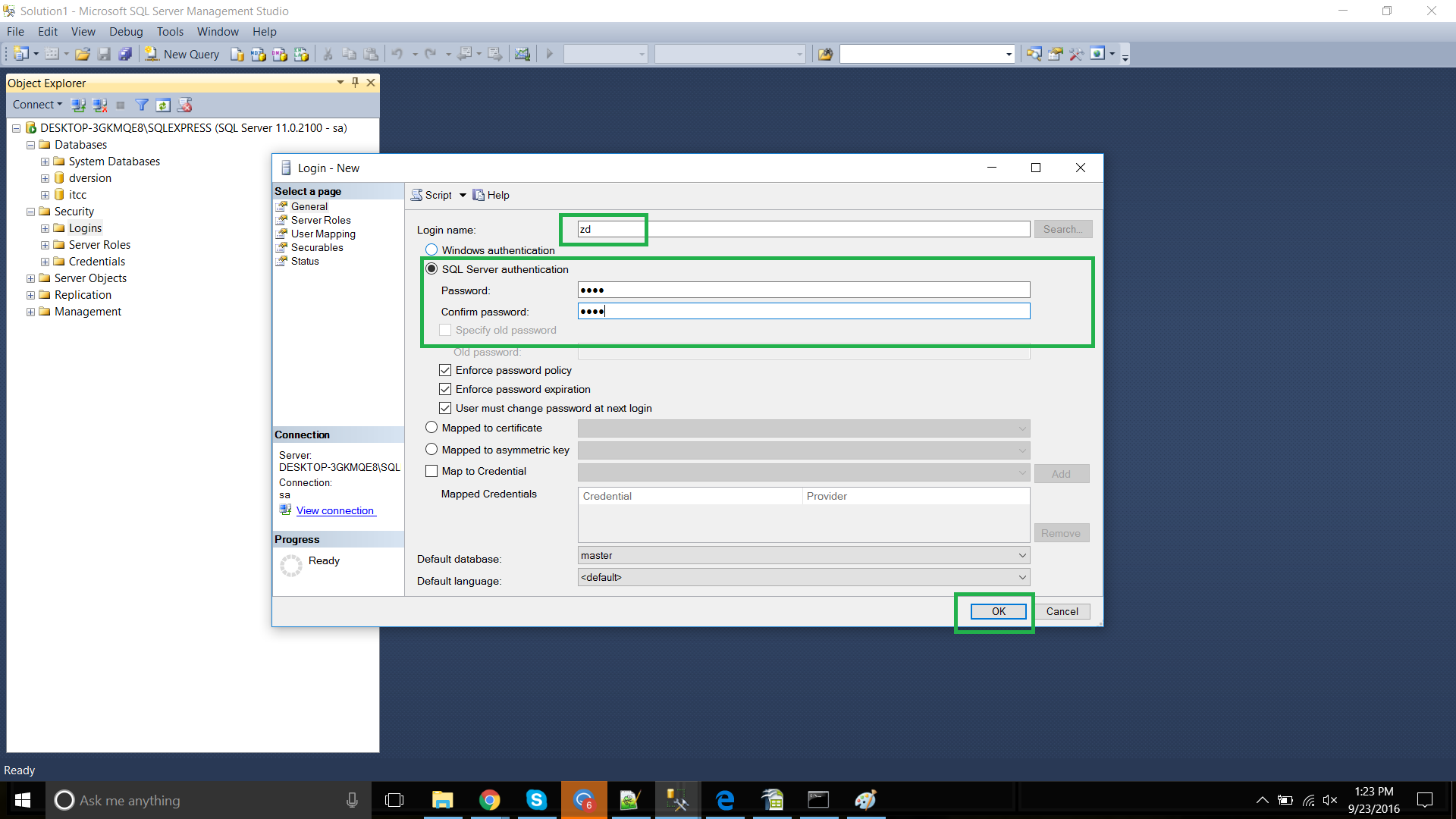 |
From the Default database list, select a default database for the login. Master is the default for this option.
From the Default language list, select a default language for the login.
Click OK.
View the newly created Login by expanding Logins under the Security folder.
 |
Next, we need to set the permissions for this Login. Right click on the user and select Properties.
 |
In Properties window, grant the permissions for the user to Alter any database.
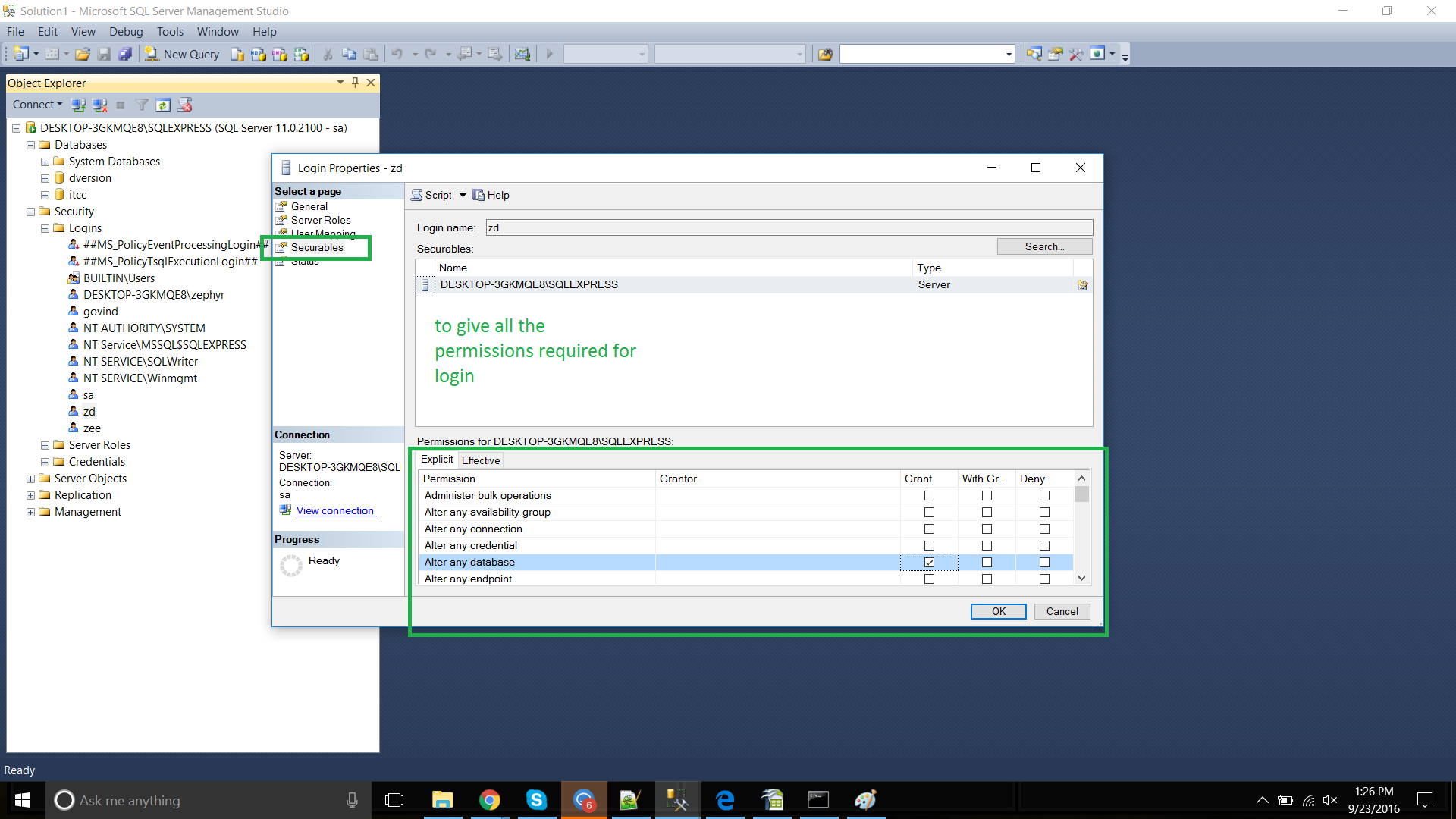 |
The Effective tab will show the minimum permissions that must be provided.
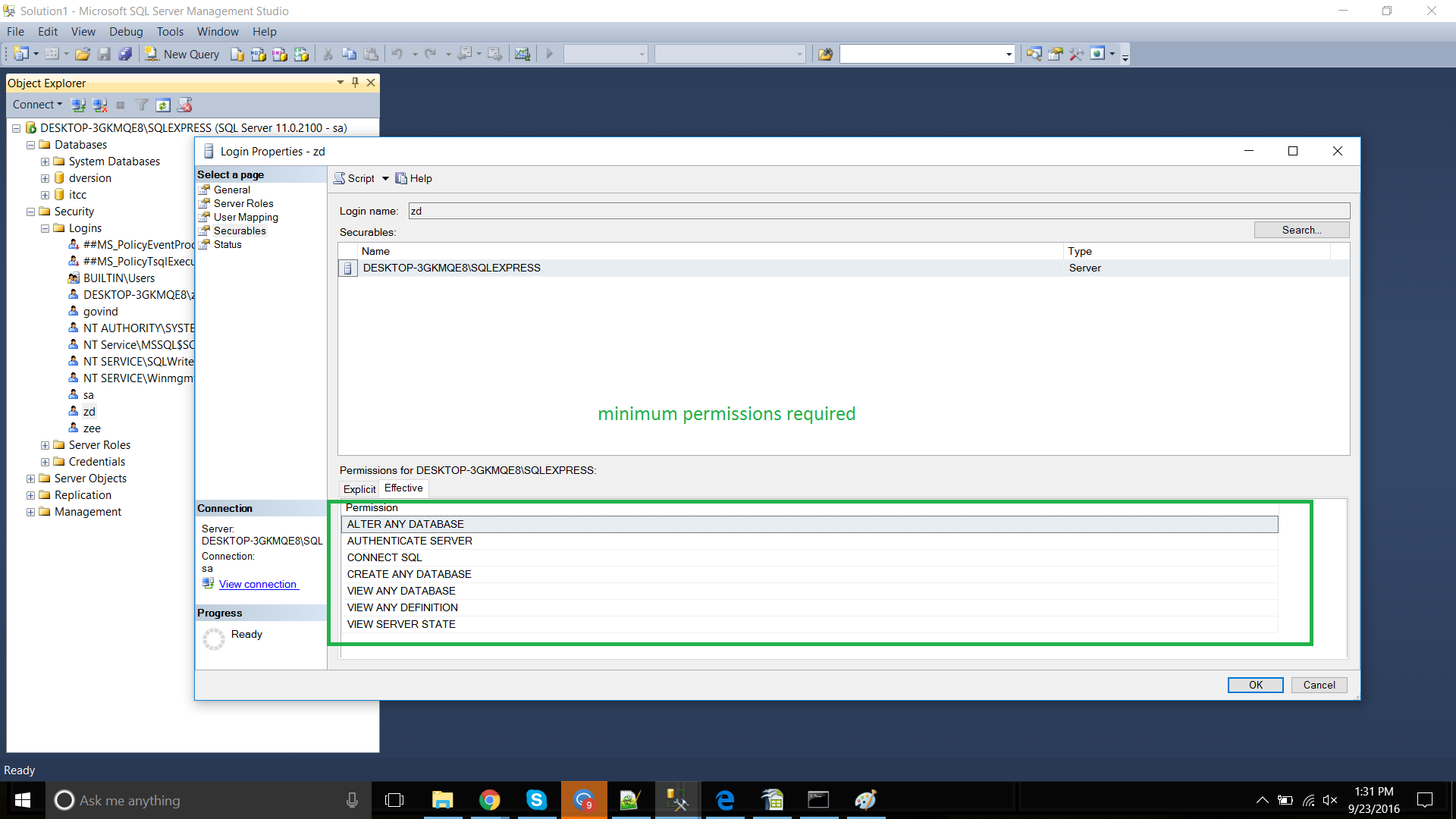 |
This process has created a new Login user with the correct permissions.
Step 2: Set permissions for remote access
In this step we will enable remote connections on the instance of SQL Server that you want to connect to from a remote computer.
Staying within SQL Server Management Studio, right-click on the server name in the left pane and select Properties.
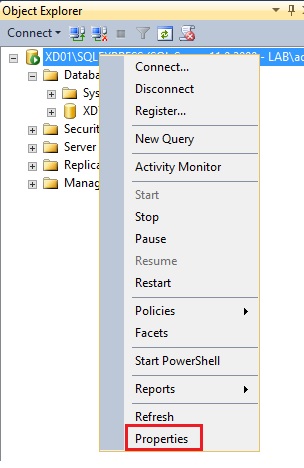 |
Select Connections in the left pane and make sure that checkbox Allow remote connections to this server is selected.
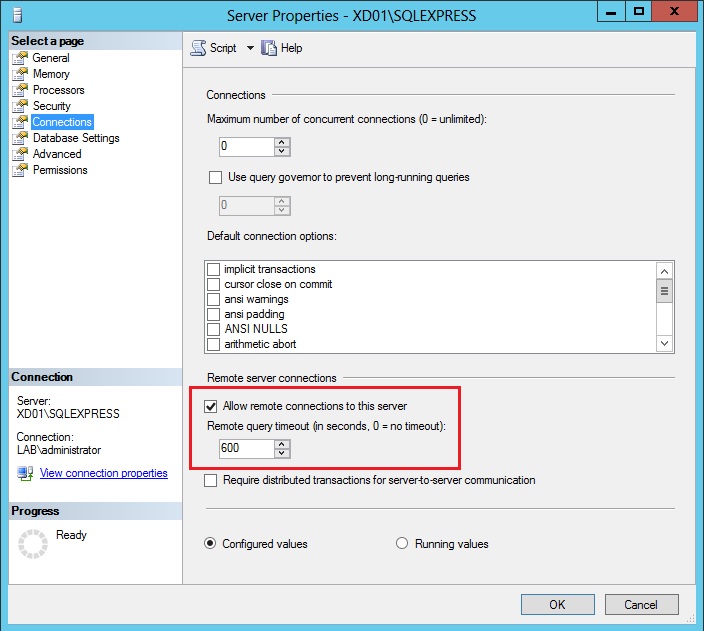 |
Next, we will need to Enable the TCP/IP Protocol. For this, Open SQL Server Configuration Manager, Expand SQL Server Network Configuration and click on Protocols for SQLEXPRESS. Check the Status to ensure that the TCP/IP protocol is enabled. if it is disabled right-click on TCP/IP and select the Enable option.
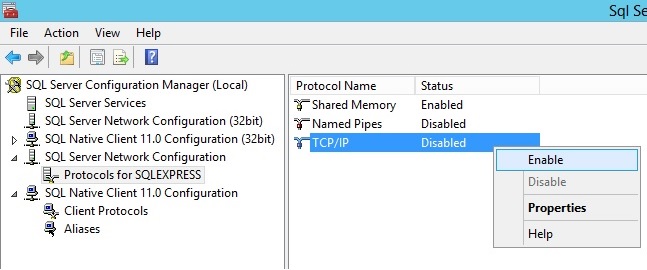 |
From the same pop-up options, click on Properties.
In the Protocol tab, make sure that Listen All has a value of Yes.
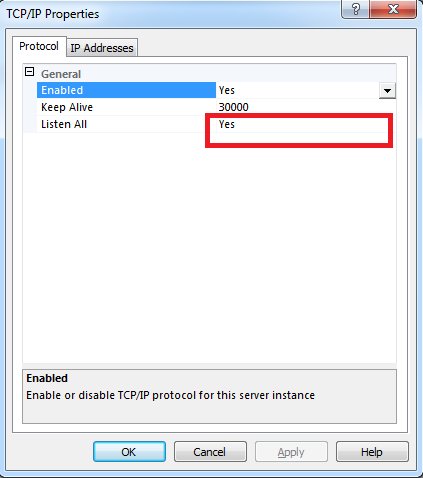 |
Now, navigate to the IP Addresses tab and scroll-down to the APAll section, and enter the port 1433 for TCP Port.
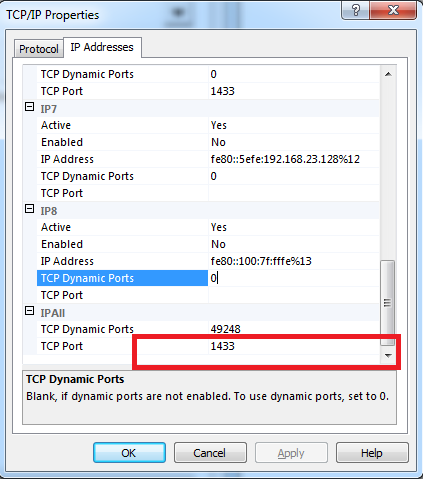 |
Finally, SQL Server service can be restarted.
Step 3: Turn on the SQL Server Browser Service
Open SQL Server Configuration Manager and click on “SQL Server Services” in the left pane, right-click SQL Server Browser service and select Properties.
 |
Go to the Service tab and for the Start Mode option change start the type to Automatic.
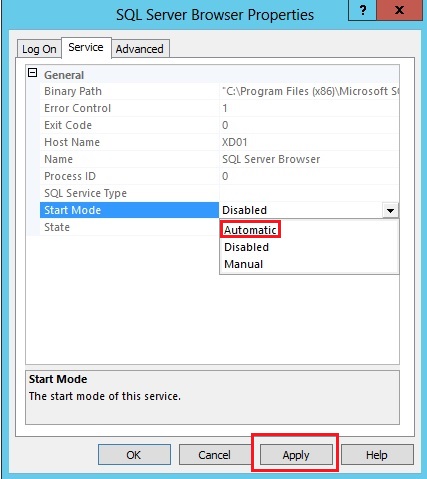 |
Click the Start button to start the SQL Browser service.
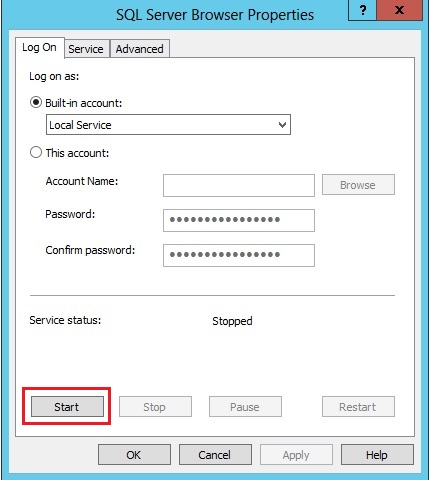 |
Confirm that the SQL Server Browser service is in the Running state.
 |
Step 4: Configure Firewall to allow network traffic
In this step we will configure the firewall to allow network traffic that is related to the SQL Server and to the SQL Server Browser service.
The following two ports will need to be set:
A port exception for TCP Port 1433. In the New Inbound Rule Wizard dialog, use the following information to create a port exception:
Select Port
Select TCP and specify port 1433
Allow the connection
Choose all three profiles (Domain, Private & Public)
Name the rule “SQL – TCP 1433″
A port exception for UDP Port 1434. Click New Inbound Rule again and use the following information to create another port exception:
Select Port
Select UDP and specify port 1434
Allow the connection
Choose all three profiles (Domain, Private & Public)
Name the rule “SQL – UDP 1434
Step 5: Setting up Authentication
In SQL Server Management Studio, right-click on the server name in the left pane and select Properties.
 |
From here, select Security and under Server authentication, select SQL Server and Windows Authentication mode.
Step 6: Install Zephyr and Connect to the Database
Now the Database is ready, open the Zephyr installer. The wizard will take you through the setup steps.
When prompted to "Choose deployment type", select between the Server or Data Center deployment type.
Provide the license file for Zephyr.
Enter the required details to configure the database.
Pressing "Test Connection" button should now provide the message "Database Connection test successful!".
The Installation wizard will then provide Shortcut options, and install Zephyr.
After the install, follow these steps:
For Windows : go to your Zephyr installation directory (the default is C:\Program files\Zephyr\):
(i) Navigate to ..\tomcat\webapps\flex\WEB-INF\template
(ii) Copy the cluster.properties.tmpl file to ..\tomcat\webapps\flex\WEB-INF\classes and rename the file to cluster.properties. Restart the Server .
For Linux : go to your Zephyr installation directory (the default is usr\local\Zephyr\):
(i) Navigate to ..\tomcat\webapps\flex\WEB-INF\template
(ii) Copy the cluster.properties.tmpl file to ..\usr\local:\Zephyr\tomcat\webapps\flex\WEB-INF\classes and rename the file to cluster.properties. Restart the Server.
Step 7: Setting up Memory
In SQL Server Management Studio, right-click on the server's name in the left pane and select Properties.
 |
Now select Memory, and set the Minimum and Maximum server memory to the desired level. 8GB is our recommended minimum.
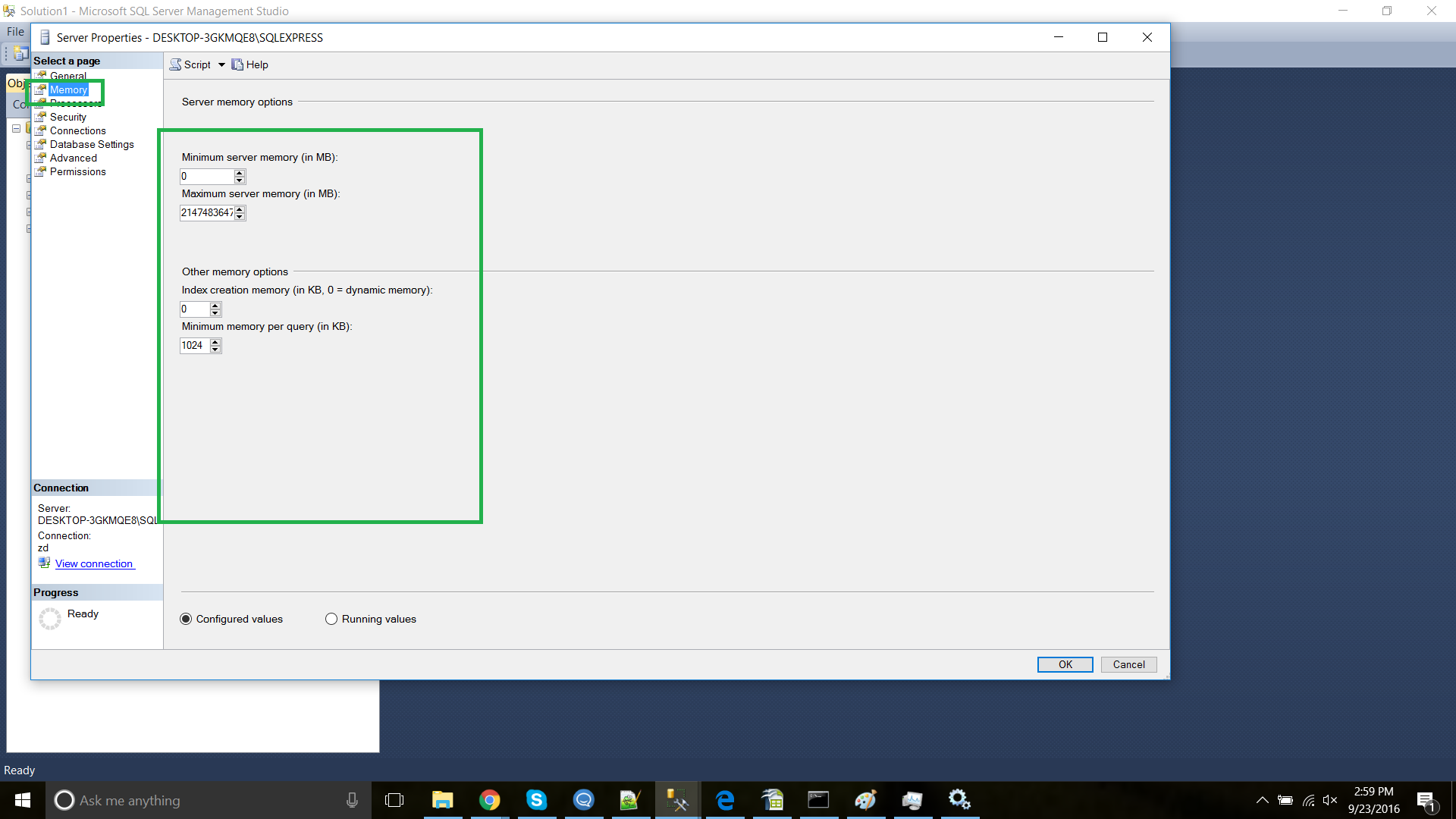 |
Step 8: Knowing where the Logs reside
Knowing where the Log files reside is useful when troubleshooting. To view the Logs in SQL Server, expand the Management tab, select SQL Server Logs. Click on View SQL Server Log.
 |
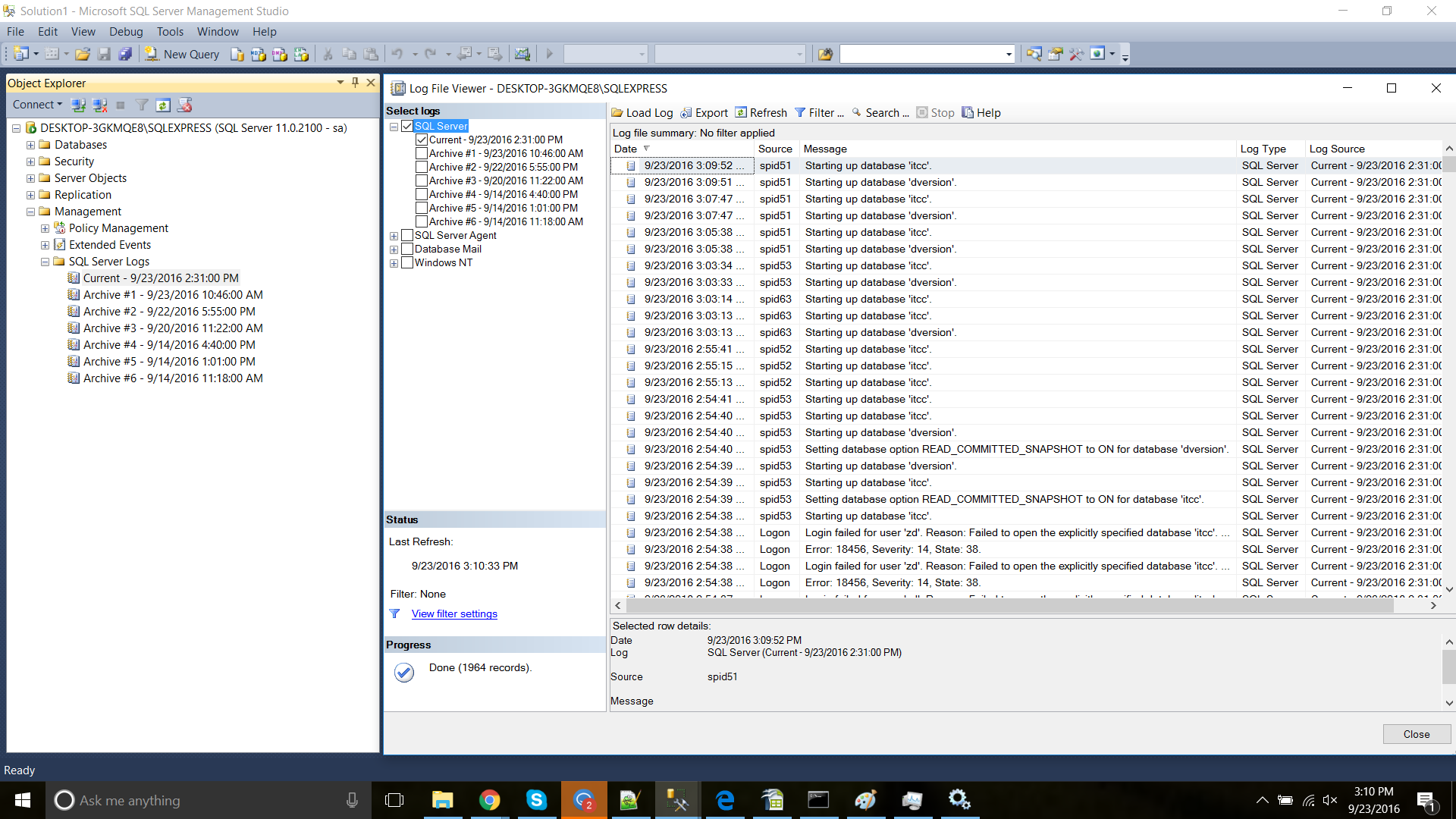 |
